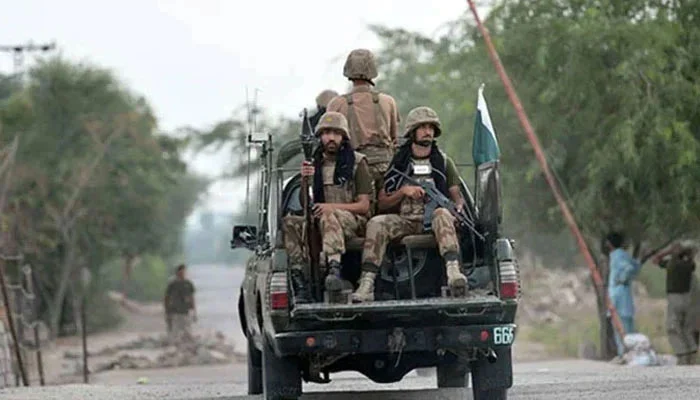KARACHI: A mysterious underground fire in the city’s Korangi industrial area has now continued unabated for 10 days, with authorities still unable to identify a clear cause or find a solution to extinguish it.
The blaze, which began on March 29 after a 1,200-foot-deep bore was drilled in the area, has raised alarms among environmentalists, scientists, and residents. Most disturbingly, the flame has shifted from a blue hue to a reddish tone, signaling incomplete combustion and the potential release of carbon monoxide, a toxic gas.
Toxic Chemicals Detected in Water Samples
A preliminary chemical analysis conducted by Pakistan Petroleum Limited (PPL) has revealed the presence of hazardous substances in the water seeping from the fire site:
- Tetrachloroethylene: 33 µg/L (vs. limit of 5 µg/L)
- Benzene: 19 mg/L (vs. limit of 5 mg/L)
- Toluene: 15 µg/L (3x higher than safe levels)
- O-Xylene: Slightly elevated (exact figures not provided)
Although the overall hydrocarbon levels were reportedly within permissible limits, the high concentrations of industrial solvents and carcinogens like benzene have triggered serious health and environmental concerns.
Possible Link to Toxic Waste in Malir River
Officials suspect that some of these chemicals may be linked to untreated industrial waste being illegally dumped into the Malir River, which may have seeped into the groundwater over time. However, this hypothesis has yet to be confirmed through a comprehensive environmental study.
Lack of Action Draws Criticism
Despite the growing risks, no clear contingency plan or technical intervention has been initiated by authorities:
- No specialized firefighting firm has been called in, despite the existence of companies equipped to handle such underground blazes.
- No public statement has been issued on efforts to assess the size or scope of the potential gas reservoir beneath the surface.
- There is also no formal evacuation or health advisory for workers or residents in nearby areas.
Public Safety and Environmental Crisis Loom
Experts warn that prolonged exposure to benzene, toluene, and other volatile organic compounds (VOCs) can cause respiratory issues, skin disorders, and long-term carcinogenic effects. The presence of carbon monoxide in the burning gases further raises the stakes.
“It’s not just a fire—it’s a slow-burning chemical hazard. Immediate containment and scientific analysis is essential,” said an environmental health expert familiar with the case.
What’s Next?
With the fire still burning and no effective response from municipal or provincial authorities, residents and watchdogs are urging:
- A multidisciplinary task force involving environmental scientists, geologists, and emergency responders
- Immediate testing of air quality and groundwater contamination
- Engagement with international fire containment experts if needed
The Korangi blaze may soon become not just an industrial mystery, but a full-scale public health crisis—unless swift and strategic action is taken.
Let me know if you’d like this reformatted as a press release, a report, or shared as part of a campaign brief.




